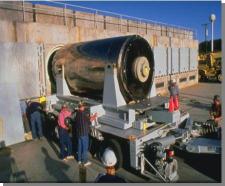 |
| Calling All San Onofre Surfers |
While many of us have been busy focusing on the host of problems we face because of San Onofre, there is one very important issue we are neglecting: the immanent pending decision of the NRC on whether to fund the Natioinal Academy of Sciences (NAS) cancer streak study in this area. The NAS sent their Phase 2 proposal to the NRC back in January and the NRC is dragging its feet on whether to approve it. Many think that the NRC does not want this study done because of the possibility of revealing that the radioactive releases Edison has been doing into the ocean and into our atmosphere for the last half century may have a significant toll on our health.
The NAS study will focus particularly on women and children who are the most vulnerable. If you have lived within 31 miles (50 km) of the plant and had children since the 1980s, you will be part of the study. As you know, nuclear power plants are known emitters of beta and gamma radiation which can easily penetrate your home and your body and rearrange cell DNA which might result in cancer after years or decades of exposure.
There is Congressional oversight on this, but the NRC has played down this investigation and more public pressure is needed to get this study funded. Even though San Onofre is “closed,” we know that considerable emissions will continue to take place during the coming decades of decommissioning. They will continue to be discharging up to 36 radionuclides into the giant 18 ft pipes into the ocean (at a rate up to a million gallons per minutes with some discharges lasting 25 hours). Since 1990, the NRC has relied totally on an old and now discredited study by the National Cancer Institute which performed a heavily flawed study that failed to find a cancer effect. The NRC and the nuclear industry like this study and they routinely (and mistakenly) say it proves that radiation is harmless to people living near NPP.
There are two key people in Congress who are actively concerned about this. They are in a position to put pressure on the NRC to fund the study. They are our own Sen. Boxer and Massachusetts Senator Markey. Please write to both of them, perhaps both a written letter and an email (and call them). It is not necessary to sound like a nuclear physicist and cite the details. Just express your concern as a resident, and ask them to please contact the NRC and help get this study funded.
Many thanks!
Roger Johnson
Senator Barbara Boxer
312 N. Spring St., Suite #1748
Los Angeles, CA 90012 213-894-5000
Senator Barbara Boxer
112 Hart Senate Office Building
Washington, DC 20510 202-224-3553
Senator Edward Markey
255 Dirksen Senate Office Building
Washington, D.C. 20510 202-224-2742
Senator Edward Markey
975 JFK Federal Building
15 New Sudbury Street
Boston, MA 02203 Phone: 617-565-8519
Also copy: sarah_butler@markey.senate.
Link to Analysis of Cancer Risks Among Populations Near Nuclear Facilities Jan. 2015:
















